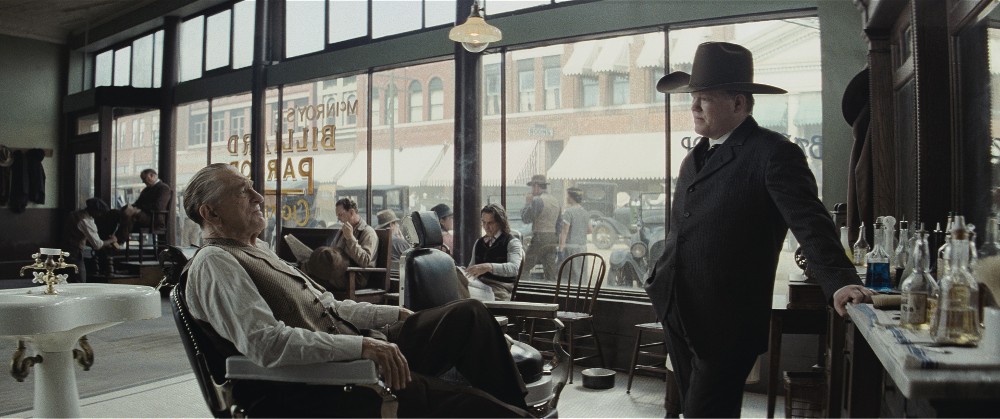
Filmmaker Martin Scorsese has created another masterpiece with his new film, Killers of the Flower Moon, a crime-thriller set in 1920s Oklahoma at a time when the Osage Nation was thriving from their discovery of oil on their lands, though as usual, many white men were trying to take what was theirs. Into this environment comes Leonardo DiCaprio‘s Ernest Burkhart, who at the suggestion of his uncle Bill Hale (Robert De Niro) marries an Osage woman, Mollie (Lily Gladstone), in an attempt to inherit the Osage money as her family begins dying off mysteriously.
It’s a riveting story based on the novel by David Grann, but much of creating such a vivid look back into history fell upon Production Designer Jack Fisk, who previously received Oscar nominations for designing The Revenant and Paul Thomas Anderson‘s There Will be Blood. Fisk has also worked extensively with Terrence Malick, going all the way back to Badlands in 1973. (He’s been married to that film’s star, Sissy Spacek, ever since.)
Below the Line spoke with Fisk at length over Zoom a few weeks back, mostly focusing on Killers, but knowing full well that he’s someone who has worked in movies for such a long time, that he probably has thousands of great stories to tell.
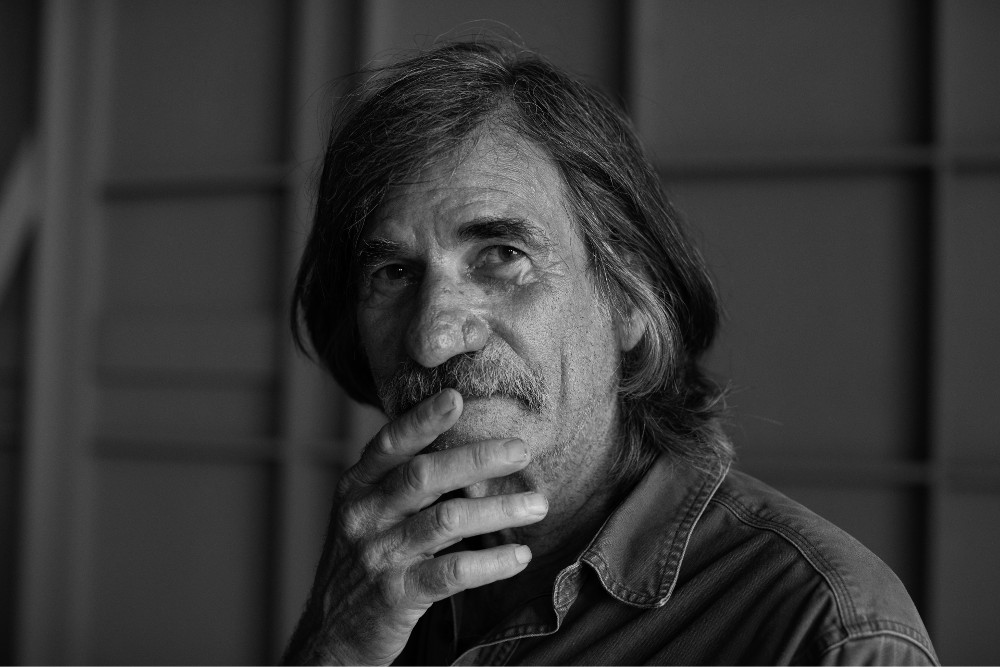
Below the Line: I think you’ve made other movies in Oklahoma, right?
Jack Fisk: I did To the Wonder with Terrence Malick. Terry grew up in Bartlesville, right close by Pawhuska.
BTL: Is this the first movie you designed for Marty?
Fisk: Yep. First time I met him really was on this show.
BTL: Do you know what made him think of you?
Fisk: I think we have some mutual friends, and they said, “Hey, Jack would be perfect for this,” but Marty’s producer called me and said he’d like to meet with me. We had a Zoom meeting, because of COVID, and Marty told me about this Western that he wanted to make and the importance to him of telling the true story of the Osage Nation, and all they’ve been through.
Those two things got me very excited, and the other thing that was exciting is that we were telling a story about the Osage people in Oklahoma, and we were going to shoot in Oklahoma. That made my job more exciting, because I knew everything would look real. I didn’t know how real it would be actually walking in the buildings and seeing photographs of the characters written about in real life, but it was a daily reminder of the horrors that went on there in the early part of the 1920s.
BTL: Had he and Eric Roth already finalized the script when you came on board, or were they still working on it and figuring what the look of the movie might be?
Fisk: They had already started to prep a film, and then they pulled back. I think Martin and Leo decided to go another direction to the more human thing, instead of the FBI coming in to save the day, because they came in later. I think Leo was challenged by a character that would be loving an Osage woman but also working to kill her, that it’s a very complex relationship. I think for an actor, it was really challenging, and Marty got so excited after meeting the Osage people. The way I understand it, he wanted to tell their story. They’ve been misaligned for so many years.
Since 1808, after the Louisiana Purchase, they’ve been screwed by white [people]. They’ve been abused and taken advantage of and lied to by white men for so many years, that even when David Grann came in to write his book, I think everybody was a little suspicious. And then, when white men showed up to tell their story on film, it also scared them a little bit. I talked to one of the five remaining full-blood Osage, and he hadn’t even read David Grann’s book, because he was just afraid of how everything would be represented, even though he knew his friends had approved it. He just couldn’t bring himself to read it.
BTL: You mentioned that COVID was going on while you were prepping. I don’t know when you went out to Oklahoma to begin preproduction there, but I assume everyone went out there and just stayed there for many months rather than going back and forth?
Fisk: Right. We were not traveling back and forth. Everybody had to ride one person to a car. We had COVID tests almost every day. The people on set had it every day, and construction had them two or three times a week. But we went through a lot of weather from when we started the first of 2021, it was very cold and snowy, and then, in the summer, it got very hot.
We were also in Tornado Alley, so we had to worry about having everything built to survive that. The poor carpenters were having to work with masks in that heat. I guess it was alright in the cold, but in the heat, it was really bad. It took a lot of time to get places, because you couldn’t gang up in cars and carpool, so everybody was exposed to the exhaustion of driving, and some of the locations were 60 miles apart.
BTL: That’s almost a day trip or half a day trip to get to places. Did they have trailers or hotels to stay once they got there, at least?
Fisk: Most of them lived in Bartlesville, so they’d go back to Bartlesville at the end of the day, which was probably about 35 minutes, 40 minutes. We had a shop in Pawhuska, and then we were building at Hales Ranch, and we were building Mollie’s house closer to Fairfax. On two different ranches we were working, we had crews split up – some will go here, some go there – and then we were building components to all the sets in the warehouse in Pawhuska, which was great, because you could get in out of the weather, except for a while we had a problem getting electricity working. It was freezing cold, and sometimes, you couldn’t even get the tools to work.
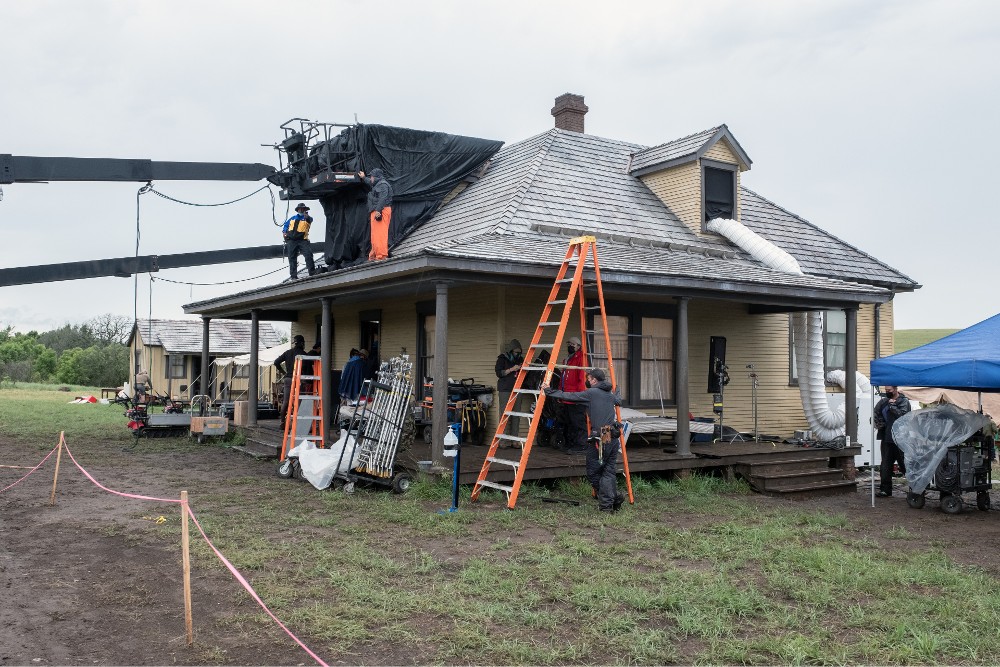
BTL: What’s your first step when you come on a project? Are you working with an artist or do you have any pictures from the time, I’m assuming?
Fisk: There were a lot of photographs from Fairfax at the time. I read David Grann’s book, of course, and I got some information there that enticed me. The fact that he never found Mollie’s house, I needed to design the house and the home settings. I had to understand more about the Osage people and what they did, because you hear they’re all rich and they lived in mansions. But then when I started looking at pictures of Fairfax, there weren’t any mansions there. I mean, the mansions that were there were built later, the end of the 1920s or 1930s, but there were a lot of small craftsman type houses. I suspected that they weren’t in mansions, and then I went about the research to find out where everybody was living.
I found some information at the county records about who owned real estate where, and I found information in research that I believe, may have been supplied by David Grann. It said that Mollie, at a probate for her mother’s will, she said that they asked her, “Where do you live?” And she says, “At home. I live in my mother’s house.” The script up to that time had Lizzie living with Ernest and Mollie. In reality, Mollie and Ernest were living with Lizzie, because it was her house, and then she left it to her grandchildren, James and Elizabeth who were the daughter and son of Mollie and Ernest Burkhart.
In Grann’s book, he talked about Maggie Burkhardt coming to a dances when he was there and asked him if he wanted to see the house that she grew up in. She took them over to this small house he said looked more like a cabin than a house. I suspect that was Lizzie’s house. In the will, it was five rooms, valued at $2,000. She didn’t own the land it was on, so that meant it was on a reservation land. In Grey Horse, I think they have 160 acres that belongs to the Osage Nation and any Osage can live there. The house has been given to another woman who was sickly and in the hospital when I was there, but Maggie Burkhart didn’t have control of it anymore.
And then I found a couple other houses that Mollie owned in Fairfax, a 400-acre farm where she lived for part of the year and then a house at Six and Elm Street. We even had the financial records of the furniture she wanted to put in that house, and the money she wanted to put a sleeping porch on. The sleeping porch is on there now, and there was a picture of Ernest out by the backyard, and I found that exact thing at Six and Elm. The problem with all these houses was they were too small to shoot in.
The farmhouse had burned down, but if I’m correct, the house of the Gray Horse would have been too small to shoot, but it would have housed Ernest’s brothers, at times, Mollie and her sisters. It was really a crowded house, but it was in the reservation area, so they had a lot of access outside. It was probably a fun place to be. I think she moved into Fairfax, because of her health. She wanted to be closer to doctors, and the conveniences of telephone and electricity and running water.
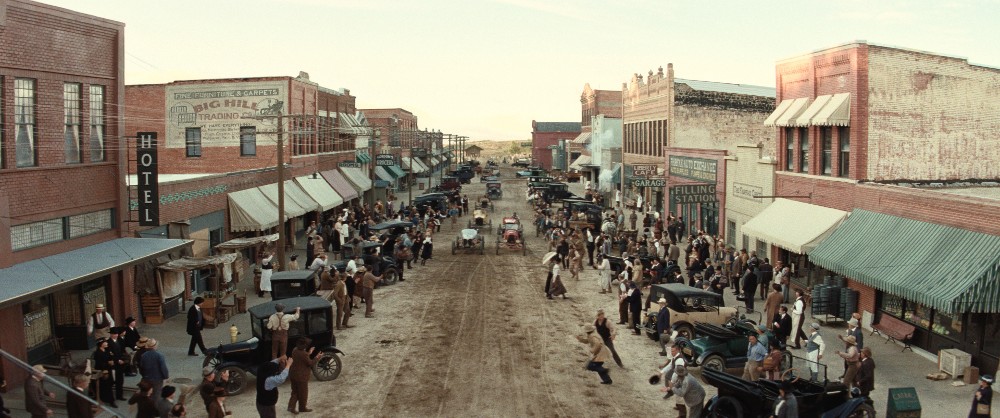
BTL: Let’s talk about Fairfax. Was that a complete build from top to bottom, or is there an actual Fairfax you could still use parts of? I assume it’s nothing like what it was 100 years ago.
Fisk: Fairfax is like it was 100 years ago, but it’s kind of disappearing, because of tornadoes, and leaking roofs. Most of the buildings, a lot of them have fallen down, and the few that remain were there 100 years ago, but there wasn’t enough to build our town. Before I came onto the project, when it was this earlier incarnation, they had made a deal to lease two blocks of buildings in Pawhuska that were primarily abandoned buildings. There was a newspaper office there, I think, and a couple of gift shops, but basically out of 40 spaces for buildings, those were the only businesses.
We had access to the old buildings. A lot of them were so bad, you couldn’t walk into them without fear of dying. In the places where buildings had disappeared, we built fronts, and we fashioned them off buildings that we had pictures of in Fairfax. The difference between Fairfax was a farming community of 1,500 people, and Pawhuska was the county seat and had about 6,000 people. The buildings of Fairfax never went over two stories, and they had five-story hotels and buildings in Pawhuska.
We went in with CGI and lowered some of the buildings and took away some of the trees. At the end of our two blocks, there was more of Pawhuska, and we went right into the prairie like it was in Fairfax. Working from good black and white pictures, we had a Fairfax we were able to get an idea of the town and that helped us recreate it, but the key was finding Mollie’s house, deciding where that would be, and Hale’s house, because they were kind of opposing houses at the same time in the same county.
BTL: For the buildings in Fairfax, are you doing all of them exterior and interior as well, or are those mainly used as exteriors? Did you do the interiors in that warehouse you mentioned?
Fisk: Both. We didn’t have that many interiors, but we had the interior of the pool hall, which was actually shot in the old hometown appliance store in Pawhuska. We had a restaurant that we shot in that was part of that building, the store right next door; we shot a dance studio in there. The others were shot in buildings around Pawhuska, but not on that main street. We dressed up the street to look like there were shops and activity going on, but we only shot interiors, I think, of three buildings.
We shot the federal courthouse in a church in Pawhuska. It was one of the things I got excited about, because we took a Baptist church that was vacant, and took out the baptismal tub and built it to look like the original courthouse in Tulsa, Oklahoma, where they were finally convicted to prison. That was exciting, and we built a railroad station, because the railroad station in Fairfax had been torn down. They had torn down an old commercial freight line station in Pawhuska, and we took that space and built a period station, like the one that was in Fairfax.
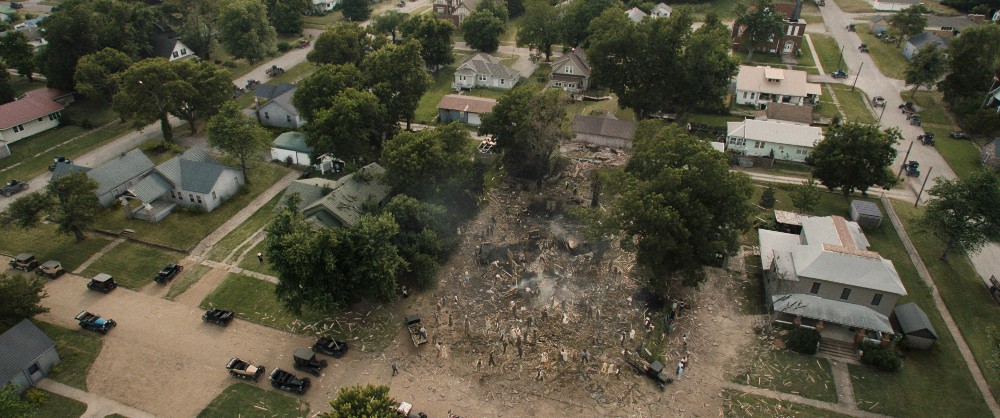
BTL: It was really great how Mollie’s house and some of the other Osage houses were decorated. Did your set decorator, Adam Willis, work with some of the local Osage to figure out exactly what they’d look like, or was he working from pictures again?
Fisk: It was easy to find pictures of storefronts and stuff like that. The Osage homes were a little more complicated, but we were given by the Osage Museum, by Marianne Bowers, off her research of all the houses in Gray Horse, we had pictures of. I visited three or four, and they were all built about the same time as Lizzie’s house where Mollie and Ernest lived.
We fashioned after that pictures of those houses. We made it a little more upscale, I think, and we made them a little larger so that we could shoot in there, and created a big porch outside for people to sleep on it and entertaining. I think it was an upscale from what the original house was, but it was realistic that we modeled after other Osage homes of the time.
BTL: I spoke to Ruth De Jong for Oppenheimer. She had a similar challenge to build the Los Alamos facility, and how they decided to do many of the buildings both interior and exterior.
Fisk: Ruth De Jong is one of my best friends, and we worked together for about six or seven years. She went on to that, and just did a beautiful job. I love the film.
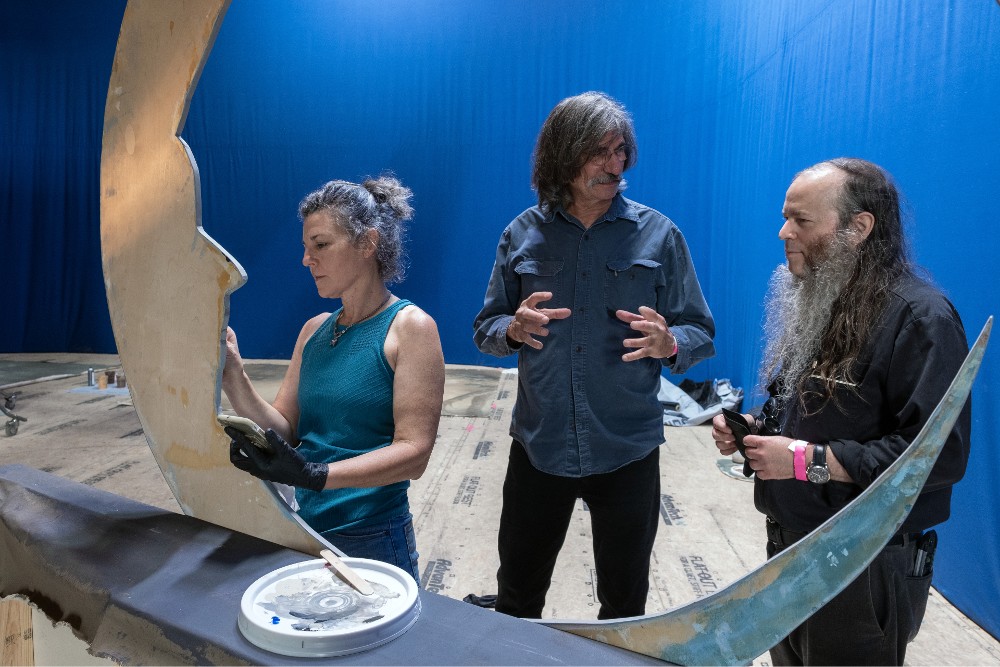
BTL: Putting together your team for this, do you have an art director you regularly work with or do you find people in the region? What’s your criteria for putting together a team for a show?
Fisk: I was dependent on people that I didn’t know. I take a lot of time off between films, just because I enjoy being with my family and being on the farm. If you don’t keep working regularly, it’s hard to keep a crew together, so every film, you’re building a new crew, and it takes a while to settle in, because you’re building a prototype. You haven’t worked together before, and you’ve got a deadline and a budget. At that time, the prices of wood, they went up 30%., from the time we budgeted til the time we started shooting.
It was difficult, and then the working conditions were difficult because of the weather, the rain and snow and the wind and that we were building outside in the COVID. Everybody was under a little bit of the uncomfortable situation, but you work like crazy. For years, I worked with two people, one was Ruth De Jong and David Crank, and it was so easy because we developed a language. No matter how bad it got, we could laugh and have fun. But when you’re building with new people, there’s so much you have to learn, but you can’t ride in cars together because of COVID, and you can’t hang out at the bar because of COVID, and you can’t even visit in close proximity because of COVID.
Because the locations were so spread out, a lot of construction people never even saw each other, because they’d be over at Hales’ ranch or they’d be over at Mollie’s, or they’d be at Fairfax, or they’d be at the Pawhuska. It was difficult, and I think they did an excellent job under really difficult situations, but it’s not ideal. I mean, ideally, you don’t want to have COVID.
BTL: Of course not, and nobody wants Marty to get COVID either, I’m sure.
Fisk: He suffers from asthma, I believe, and I don’t think he ever got COVID. I didn’t yet.
BTL: You mentioned the need for Rodrigo to have room to shoot stuff, so how do you work with him during your prep to make sure he has the space he needs to shoot in the smaller houses and locations?
Fisk: We were lucky that Rodrigo came out before we built anything, so we talked about it, and we looked at models together. We’re attracted to some of the same things, backlight and big window light, so we put large windows in all the structures we built and we orientated other structures so they could be shot looking towards the south and the west, so you have that backlight which is a real forgiving light, especially on a period film. It eliminates a lot of detail, so you’re thinking more in terms of tone and not the specifics of door hardware.
We had to have spaces for his light. When we built Hale’s house, Marty wanted to do a shot looking straight down at the floor from the second story, so when we built it, we cut a hole in the ceiling that could be lifted out, and they put the camera on a crane, and we were able to shoot an overhead shot, I think of Ernest on the floor. The advantage of having a cameraman there in pre-production is that you can design to the director and the shots they want to make, and you can take into account all the lighting.
One of the biggest challenges I thought would be that I had this idea to paint the Masonic Lodge dark blue, so there’s no light in there. There were some skylights overhead, but they didn’t go all the way to the outside, because over the years, to keep the roof from leaking, they’d patch them up. He had to light those artificially in the ceiling space, and I think he just got a beautiful tone in what I would have considered a very difficult set to shoot lighting-wise. I was talking to someone today, and they were just talking about how beautiful it was, and how much they loved the way it looked.
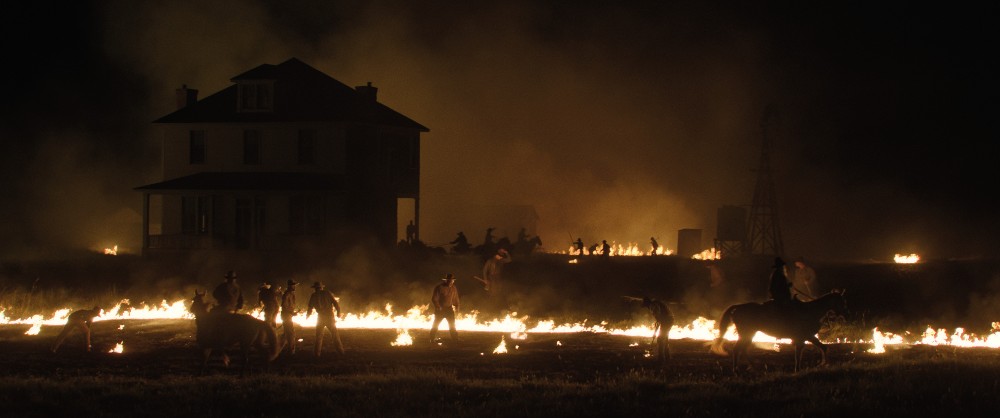
BTL: The Masonic Lodge is one of those examples of this amazing location that looks beautiful, but it’s done for one sequence and then it’s gone.
Fisk: That was the Gray Horse Masonic Lodge in Fairfax since 1924. A lot of the characters in our film, the real people represented by characters in our film, were members there. Adjacent to that, in the same building, were the Shoun brothers’ offices, the doctors’ offices, and we shot in the actual rooms that were the doctors’ offices. History just kept reminding us of the horror of the period.
I mean, these doctors were in cahoots with the sheriff and the criminals, and they were all working together to get money from the Osage. It’s a nightmare when you run to somebody for help, and you find out they’re the enemy, and you run to somebody else, the sheriff, and he’s the enemy. They were faced with that every day.
BTL: Thanks for taking the time to talk. By the way, when people talk about the price of making movies, I’m not sure I personally have ever considered the price of wood going up and how that adds to the cost. I’m sure art directors do.
Fisk: The price of wood and then getting it delivered. The supply chain was really messed up during COVID, and we were in the middle of nowhere, so we were saying, “We need one-by-twos and they sent two-by-twelves.” We’d have to make our own lumber out of what they sent us. Kudos to the construction people, because I know it was really hard, and we were just as demanding, and the time was just as urgent. There were no adjustments made for the hardships, so it just put more on their back to get things done.
Killers of the Flower Moon is now playing in theaters.





